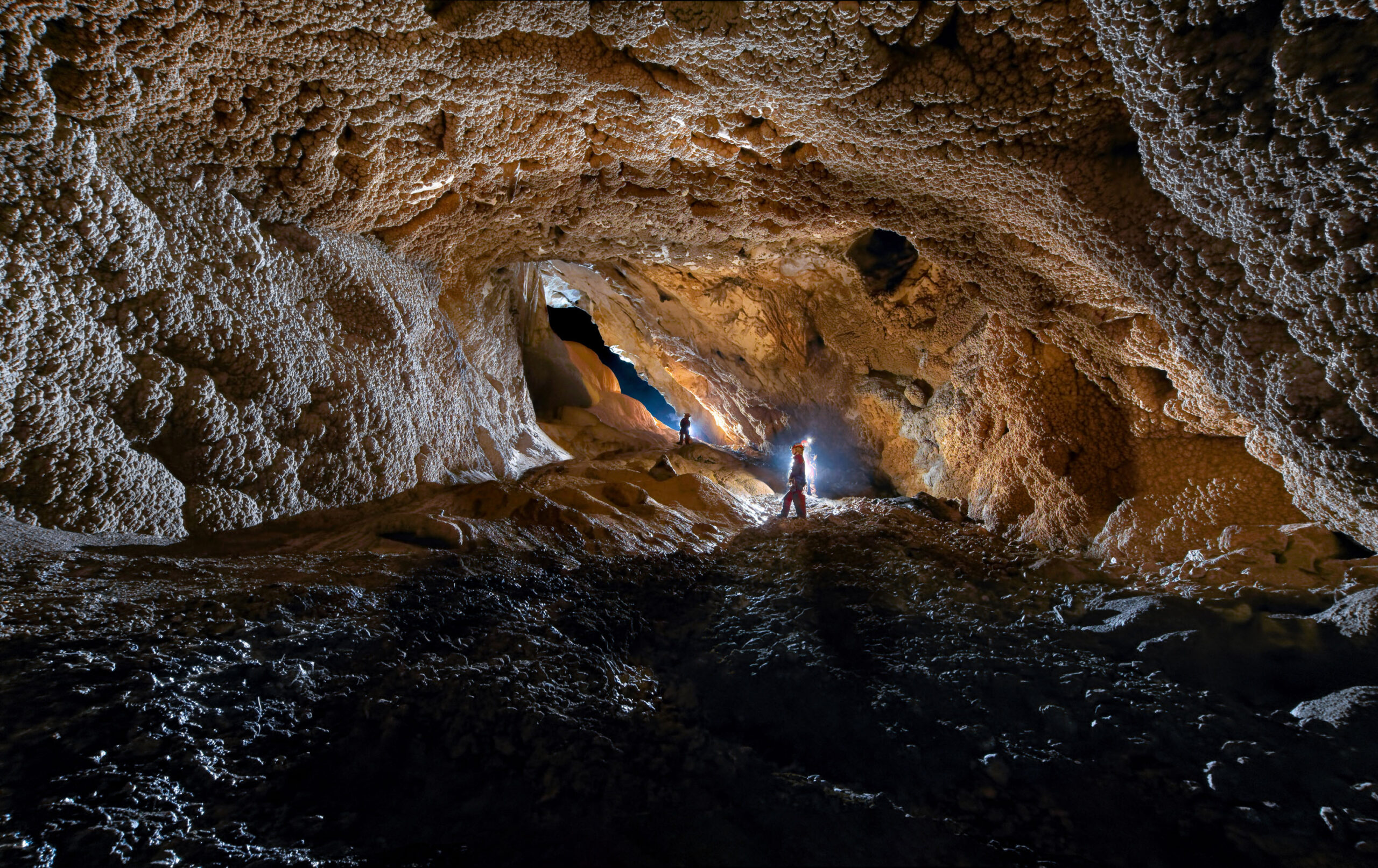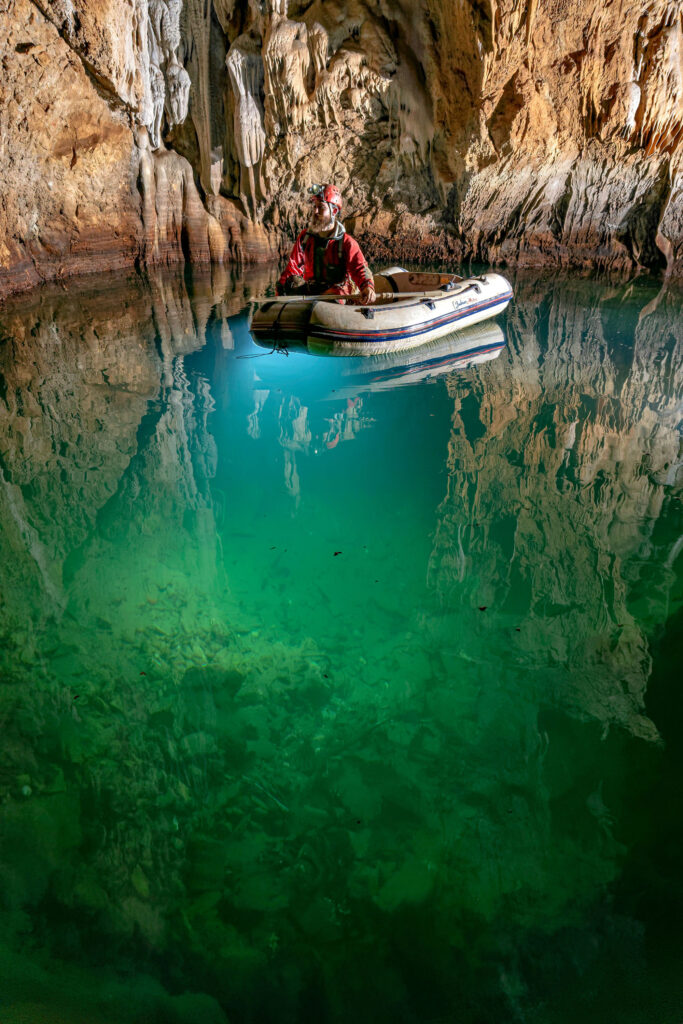
Subterranean habitats include caves, artificial habitats (like mines), cracks, MSS, and interstitia. The term ‘subterranean’ is used to describe any space or void that fulfills the environmental requirements of living organisms for their survival. Caves and artificial subterranean habitats can be defined as openings into the subterranean, large enough to allow access to humans. They are formed in many types of rock and by many processes, although the largest and most common caves are those developed in karst (limestone and dolomite) and solidified lava (lava tubes). Cracks in rock and boulders (including MSS), of smaller size than caves, are colonized by the same subterranean invertebrates as caves.
Interstitia are the largest subterranean environment on earth, as they are not linked to the nature of the rock. They are voids in unconsolidated sediments, filled by air („soils“) or by water, inaccessible to humans, of size comparable to that of micro-invertebrates, i.e. less than about 2 mm, or even smaller as many invertebrate are able to move in „pushing“ sediments.
The common features of all these habitats are
- constant darkness
- relative constancy of temperature;
- and high relative humidity.
As a result of darkness, green plants are absent except by their roots. Food resources are primarily from outside and scattered, with local exceptions like bat guano.
Most subterranean organisms are a few millimeters in size or less, and they could virtually colonize any void larger than that, as far as they are devoid of light and with environmental conditions relatively constant throughout the year. In fact, for other poorly understood reasons, soil animals rarely cross the interface between deep soil and large voids.
Karst landscapes appear mostly in carbonate and gypsum bedrock, as a result of chemical erosion caused by water. With an internal water drainage system and numerous caves, cracks, and fissures, the whole karst unit is interconnected and suitable for invertebrate fauna. The same applies to karst aquatic habitats, whose connection is even greater due to the dissemination effect of water.
Besides karst, subterranean large-size voids in other substrates host the same kind of fauna, which displays similar adaptations as well as biodiversity and endemism patterns.
Terrestrial cave habitats exhibit a progressive but steep gradient from the entrance to the dark zone in their physical environment, i.e. amount of light, moisture, and microclimatic stability, that is reflected in rapid changes in fauna. These are the entrance, twilight, transition, and dark zone.
Cave walls with water flowing in a thin permanent layer represent a special habitat, half terrestrial – half aquatic, that is called hygropetric, where subterranean beetles or springtails can be found filtrating small organic matter from the water by specially adapted mouthparts.
Subterranean aquatic habitats, collectively called groundwater, can be divided according to the type of sediment, size of voids, water velocity, water quantity, and microbiological-chemical features. Groundwater can fill voids in the substrate completely or only partially. Groundwater habitats are present in all unconsolidated sediments and in various rocks, and represent one of the most extensive ecosystems on our planet, being also present in the oceans. Rather few species are adapted to strong streams of water flowing in the subterranean. In a more peaceful environment, like small pools or stagnant water, more species are found. Stagnant water can be in a form of underground lakes or small scattered puddles in clay sediment.

